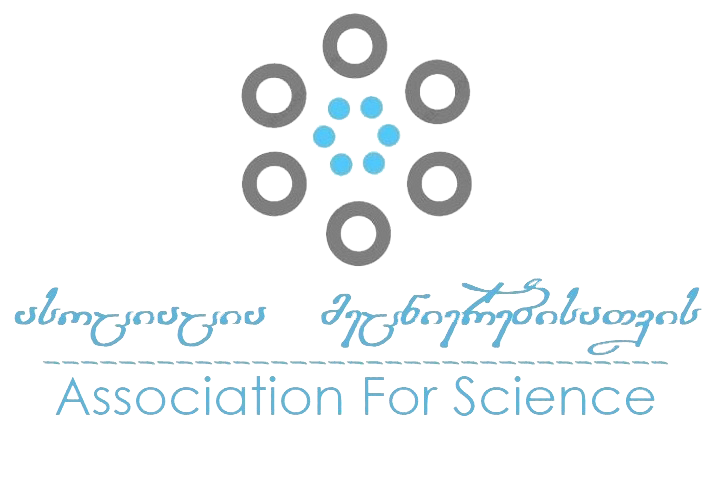Disputed Ownership of „Free Svaneti“ Estate According to „Japaridze's Blood document“
DOI:
https://doi.org/10.52340/sou.2023.19.22Keywords:
Japaridze's Blood Certificate, Free Svaneti, Borders, Toponyms, Traditional Beliefs, FatherlandAbstract
The purpose of this work is to study the disputed ownership of the estate as documented in the "Japaridze's Blood Certificate." The document has been published numerous times by different authors and is well studied in terms of paleography, date of writing a deed is investigated, as well as, its historical significance, and the transfer of paternity, geo, and hydro toponyms. However, the main objectives of issuing the document, which aimed to establish feudal relationships in the free society of Svanthet and to subject it to the royal government, have received less attention. The study examines the internal borders of "free Svaneti" as recorded in written monuments of Svaneti, also are identified the toponyms and the names of the places that have been in the "Japaridze’s Blood Certificate". Research Method: This paper uses a historical-comparative method and a cyclic study method, conducts a contextual analysis of Blood Certificate, to study the controversial issues of the ownership of "Free Svaneti", and clarifies its historical-sustainable value. Scientific Novelty of the work: based on study, the identity of the author of one of the anonymous publications of the source, have been identified. For the first time, the events conveyed in the certificate, the historical piercing, and the traditional historical reality were studied in detail. Determining the reasons for the decline in the geo -shaped boundaries of "Svaneti".
References
ბაბუნაშვილი, ნოზაძე (1994) ზაურ ბაბუნაშვილი, თეიმურაზ ნოზაძე. მამულიშვილთა სავანე, გამომცემლობა „ირმისა“, თბილისი;
გაბლიანი, (1927) ედუარდ გაბლიანი, თავისუფალი სვანეთი, ტფილისი;
გაბლიანი (2010) ეგნატე გაბლიანი „თავისუფალი სვანეთი“ კ. ქოჩქიანის რედაქციით, გამომცემლობა „ეთნოპოლიტიკა“ თბილისი;
თაყაიშვილი (1937) ექვთიმე თაყაიშვილი, არქეოლოგიური ექსპედიცია ლეჩხუმ-სვანეთში 1910 წელს, პარიზი;
ინგოროყვა (1941) პავლე ინგოროყვა, სვანეთის საისტორიო ძეგლები ნაკვ. მეორე, ტექსტები, საქართველოს სსრ მეცნიერებათა აკადემია.თბილისი;
კაკაბაძე (1920) სარგის კაკაბაძე, კვლევა-ძიებანი საქართველოს ისტორიის საკითხების შესახებ, ტფილისი;
კაკაბაძე (1924) სარგის კაკაბაძე, სასისხლო სიგელების შესახებ, სმ, II, ტფილისი;
კაკაბაძე, (1914) სარგის კაკაბაძე, წერილები და მასალები საქართველოს ისტორიისთვის, წიგნი I. ტფილისი;
მაკალათია (1930) სერგი მაკალათია, მთის რაჭა, ტფილისი;
სარალიძე (2010/2011) ლელა სარალიძე, პლატონ იოსელიანისა და მარი ბროსეს სამეცნიერო თანამშრომლობის ისტორიიდან, ისტორიისა და ეთნოლოგიის ინსტიტუტის შრომები X-XI ივანე ჯავახიშვილის სახელობის თბილისის სახელმწიფო უნივერსიტეტის ივანე ჯავახიშვილის ისტორიის და ეთნოლოგიის ინსტიტუტი; თბილისი;
სილოგავა, (1986) ვალერი სილოგავა სვანეთის წერილობითი ძეგლები, გამომცემლობა „მეცნიერება“, თბილისი;
სოსელია (1973) ოლია სოსელია ნარკვევები ფეოდალური ხანის დასავლეთ საქართველოს სოციალურ-პოლიტიკურ ისტორიიდან (სათავადოები), თბილისი;
სულხან-საბა (1949) სულხან საბა ორბელიანი, სიტყვის კონა ქართული, რომელ არს ლექსიკონი, სოლომონ იორდანიშვილის რედაქციით, საქართველოს სსრ სახელმწიფო გამომცემლობა, თბილისი;
ქსე (1983) ქართულ საბჭოთა ენციკლოპედი, ტ. 6. საქართველოს სსრ მინისტრთა საბჭოს გამომცემლობა, თბილისი;
ქსე (1977) ქართული საბჭოთა ენციკლოპედია, ტ. 2. საქართველოს სსრ მინისტრთა საბჭოს გამომცემლობა, თბილისი;
ყაუხჩიშვილი (1976) საქართველოს ისტორიის ძველი ბერძნული წყაროები, თბილისის უნივერსიტეტის გამომცემლობა, თბილისი;
ცისკარი (1866) „ცისკარი“, N10 ოქტომბრის გამოცემა, განყოფილება III;
ჯავახიშვილი (1982) ივანე ჯავახიშვილი, თხზულებანი თორმეტ ტომად, ტომი III, თბილისი;
Brosset, (1838) Marie Brosset, archeogrape georgien, BSc, IV. N17;
Какабадзе, (1967) Саргис Какабадзе, Грузинские документи Института народов Азии АН СССР, Москва;
Ковалевски (1890) Максим Ковалевски. Закон и обычай на кавказ. Т. I. Москва, тип. А. И. Мамонтова и К°.



